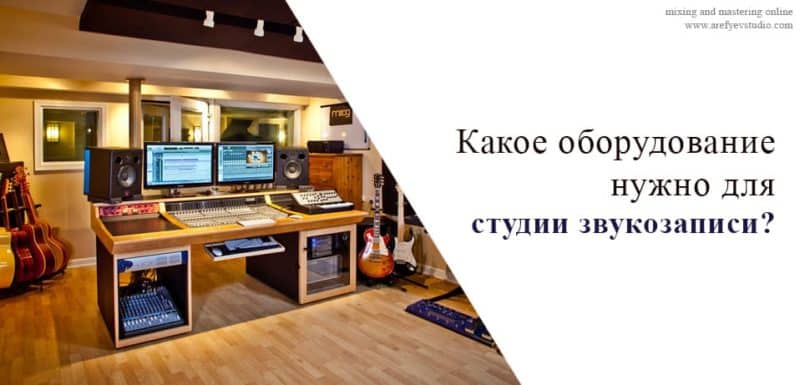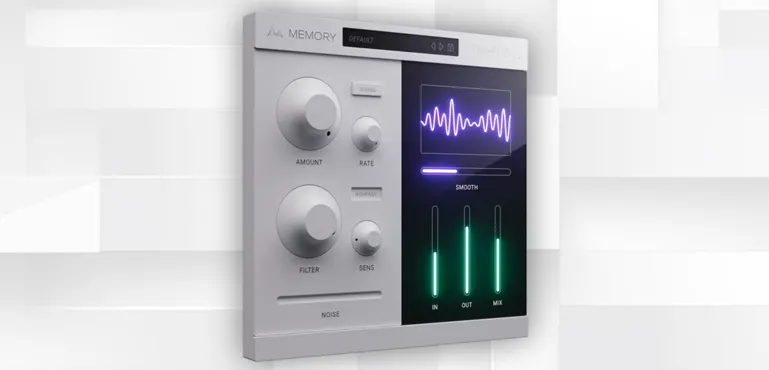If the task is to open a recording studio (home or commercial), many people ask questions: – where to start? what to buy first? What is required in the studio? what to focus on?
In order to answer these questions, think carefully about your future plans and decide whether you will only record vocals and instruments, or will you also record a live drum set? If you want a full range, then the room will be many times more. If you are creating a studio purely for yourself and want to get a decent quality of recording, then you will need not so much equipment:
- The computer is a workhorse. It should be a powerful device, so that it can pull not only one project, but also 50-70 duplicates of vocals sung crystal clear. How to choose a DAW for work is a matter of your taste. There is no difference in quality between them. If earlier some program was designed to work with midi, some kind was for processing and had more advanced functionality, now these are large stations that include everything possible. We stopped at the program Samplitude Pro X3 Suite, which is not as advertised as its colleagues in the shop, but has everything you need for mixing and mastering.
- Sound card. Looking ahead, I would like to emphasize right away – the built-in maps in the PC are not suitable for professional work. They are not intended for music, but for technical reproduction. Needless to say, through such cards you will not make a high-quality recording of any instrument. The only sound card of its kind that I would like to highlight (which can be embedded in a computer) is the card from RME. They have many models of both external and internal cards, but their cost starts from $ 400. But it still does not solve the issue of high-quality recording of instruments, and you need to look at external cards with a DI-Box (so that noises of the same electric guitar are captured).
- Microphone. What is a sound recording studio without a microphone? right – no! 🙂 The microphone is the most scrupulous that can be in it. If you build a studio for yourself – do not be guided by the cost, but come to music stores and try how your voice will sound in it. It often happens that someone sounds better in a $ 200 microphone than in a $ 1000 microphone. It happens and vice versa. Do not look at the names and marketing moves. A $ 90 studio microphone does not guarantee you a good recording. Look at the classic models that have been used for years and are still being produced. We do not dare to advise something specific, it is rather a matter of taste.
- Monitors. If you want to hear the right sound, then the speakers from the home theater will not work. You need studio monitors, which are designed to calibrate the sound and have a flat frequency response. It is important to emphasize that you should not make mixing on 3-inch monitors. You will lose a lot of information in the bottoms and lower middle. Consider immediately 5 – 8-inch (depending on the room), and preferably with a subwoofer. The cost of a good monitor (and most often their cost is indicated for one column) starts from $ 300 (a couple will cost $ 600 or more).
- Headphones. If you can not buy monitors – take a good headphone (the solution is only suitable for a home studio). Naturally, with headphones you can’t control how the mix behaves on great acoustics, so you should look at point 4 right away. .. something else – come to us under any pretext! We will make mixing and mastering inexpensively and efficiently, which will significantly save you time and expenses.
- Preamplifier. For the microphone, you will need a good quality preamp to immediately saturate and enrich the recording. If you compare the accumulation into the microphone directly from the card and through it, the difference will be very significant. This simplifies the work and allows you to reveal your voice.
- Mixer. A recording studio is simply obliged to have on board at least an inexpensive mixing console. When recording voice or instruments, it will be very convenient for you to build a balance and even make panning. Pay attention to the “oldies” of these devices and do not buy cheap analogues, which will make noise and artifacts in the recorded material.
- Soundproofing. It is interesting to record material, but during processing it can turn out that background sounds, steps, clicks and other artifacts will be captured by a microphone. Also, when mixing and mastering, the sound can be reflected off the walls and this will create a frequency confusion. To eliminate it as much as possible – you need to make the room insulation. For this purpose, a special absorbing foam. The cost of it is different – from $ 3 per layer 50 * 50 centimeters
- DAW controller. You will be surprised how convenient and quickly you can manage a project through the mixer for the program. You do not have to do unnecessary movements with the mouse on the small elements of the mixer on the monitor and you can build everything with your fingers. Unfortunately, mixing consoles do not perform this function, although this would greatly simplify the process. Among the most popular are Avid Artist Control V2, Preconus FADEPORT, Avid Artist Mix and Behringer X-Touch Universal.
- Switching and UPS. No matter how ridiculous it may sound, the UPS (uninterruptible power supply) must be in every studio in case of unforeseen circumstances. It is extremely disappointing and annoying when the DAW program is not configured to automatically save the project, and here the light turns off in a flash and your 3 or 5 hour work just flies off without the possibility of recovery. In this case, the UPS will save you, which will give 10-15 minutes for quiet preservation and shutdown of the computer.
If you are creating a commercial studio, then you should look at such details.
- Be sure, to control and monitor the project you are reducing, you need to carry out the shih-control of sound.
- When your monitor line expands, it will be a matter of adjusting the balance of the monitors. Agree, it will be extremely inconvenient to run on / off monitors to listen to how and what sounds. For this you need a monitor controller. Among the most popular are two models that are often found in world mixing and mastering studios: Mackie BIG KNOB and Behringer Xenyx CONTROL2USB.
- It often happens that clients ask to write down or rewrite some batches of tools. The most popular in recording studios are guitars. Take a pair of acoustic and electric guitars on board for such needs.
- Microphones If you plan to record instruments and drums, then for each task you will need different types of microphones. This will cost you a lot of money, since for each instrument, cymbal, snare and so on, you need separate microphones that will most accurately and correctly transmit the sound.
- Large mixing console. We wrote earlier that for a home recording studio there will be a rather small remote, but if you record a drum set or a cover band, you will need to bring all this through the console to the program and immediately bring out the balance and panorama. Here, without a good expensive remote can not do. Otherwise, you face a frequency confusion and sheer porridge in the project.



